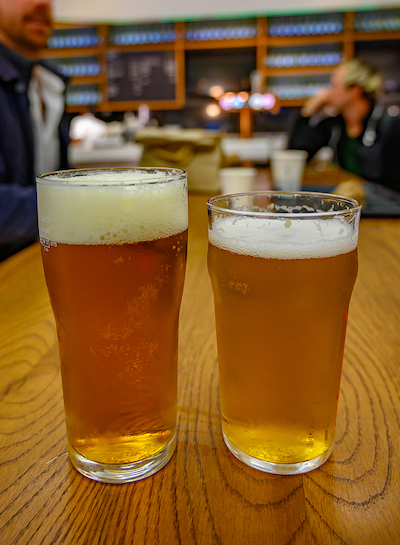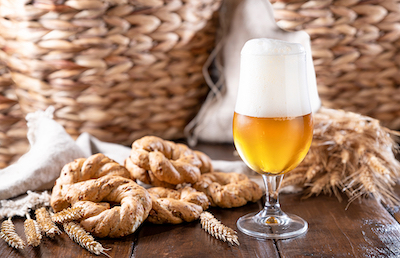As the world of beer continues to evolve, it’s essential to understand the differences between two of the most popular types of beer: lagers and ales. With their distinct characteristics, each beer style appeals to different palates and occasions. This article will delve into the unique brewing processes, flavors, and history of lagers and ales to help you better appreciate the nuances between these two beloved brews.
I. The Brewing Process
The primary distinction between lagers and ales lies in their brewing processes. Fermentation, the phase during which yeast converts sugars into alcohol and carbon dioxide, is the key differentiating factor.
- Lager Fermentation
Lagers are brewed using a specific strain of yeast called Saccharomyces pastorianus. This yeast ferments at colder temperatures, typically between 45 and 55°F (7 and 13°C), resulting in a slower, more extended fermentation process. The term “lager” originates from the German word “lagern,” meaning “to store,” which is fitting given that lagers are traditionally stored and aged for weeks or months in cold temperatures. This extended, cold fermentation results in a cleaner, crisper taste with fewer fruity esters and a more subtle flavor profile.
- Ale Fermentation
Ales, on the other hand, are brewed using a different yeast strain called Saccharomyces cerevisiae. This strain ferments at warmer temperatures, ranging from 60 to 75°F (15 to 24°C). The warmer fermentation process is generally quicker, lasting anywhere from a few days to a couple of weeks. Ales’ warmer fermentation encourages the production of esters, resulting in a more pronounced, fruity, and complex flavor profile. The higher temperatures also promote the development of phenols, which can contribute spicy or clove-like characteristics to the beer.
II. Flavor Profiles and Characteristics
Due to the differences in fermentation, lagers and ales exhibit unique flavor profiles that cater to varying tastes and preferences.
- Lager Flavor Profiles
Lagers are known for their clean, crisp, and refreshing qualities. These beers often have a light to medium body, with a mild malt sweetness and a subtle hop bitterness. The cold fermentation process minimizes the production of esters and other flavor compounds, allowing the beer’s malt and hop characteristics to take center stage. Lagers are typically less fruity and more balanced in flavor than ales, making them an excellent choice for those who prefer a more delicate, easy-drinking beer.
Examples of lager styles include Pilsners, Bocks, Dortmunder Exports, Märzens, and American Lagers.
- Ale Flavor Profiles
Ales, conversely, boast a diverse array of flavors due to the warmer fermentation process. The increased production of esters, phenols, and other flavor compounds contributes to the complexity and depth of ales. These beers can range from fruity and spicy to malty and robust, with varying levels of hop bitterness. Ales generally have a medium to full body and are often more aromatic than lagers.
Examples of ale styles include India Pale Ales (IPAs), Porters, Stouts, Belgian Ales, Brown Ales, and Wheat Beers.
III. History and Origins
The history of lagers and ales dates back centuries, with each style developing its own unique story and evolution.
- Lager History
Lagers’ origins can be traced back to 15th-century Bavaria, where brewers discovered that storing their beer in cool caves during the fermentation process resulted in a smoother, more refined beverage. As lager yeast strains were naturally more cold-tolerant, they thrived in these conditions, leading to the distinctive characteristics of lagers. The invention of refrigeration in the 19th century further propelled lagers’ popularity, as it allowed for year-round production and a more consistent product. Today, lagers are the most widely consumed type of beer worldwide, with many commercial breweries specializing in this style.
- Ale History
Ales, on the other hand, have a much longer history, with evidence of ale production dating back thousands of years. Ancient civilizations such as the Egyptians, Mesopotamians, and Romans all brewed ales, making them the oldest known type of beer. Ales remained the dominant beer style throughout the Middle Ages, as the warmer fermentation process was better suited to the climate and resources available in Europe at the time. The Industrial Revolution brought about significant advancements in brewing technology, allowing for the diversification and refinement of ale styles. Today, ales are celebrated for their rich history, variety, and complex flavors.
IV. Food Pairings
Lagers and ales each have their unique strengths when it comes to pairing with food.
- Lager Food Pairings
Lagers’ crisp and clean flavors make them versatile companions for a wide range of dishes. The subtle malt sweetness and light hop bitterness of lagers complement lighter fare, such as seafood, grilled chicken, and salads. Additionally, lagers’ refreshing qualities can help cleanse the palate when enjoying spicy or fried foods, making them an excellent choice for pairing with dishes like tacos, spicy curries, and buffalo wings.
- Ale Food Pairings
Ales offer a diverse range of flavors, making them ideal for pairing with various dishes. Bold, hoppy ales like IPAs are well-suited to stand up to rich, hearty meals such as burgers, steaks, or barbecued meats. Malt-forward ales like Brown Ales and Porters pair beautifully with roasted or smoked dishes, while fruity and spicy Belgian Ales complement more delicate flavors found in poultry, fish, or dishes with subtle spices. Wheat beers, with their light and refreshing characteristics, can be paired with salads, sushi, or citrus-infused dishes.
V. Conclusion
Both lagers and ales hold a special place in the hearts of beer enthusiasts worldwide. While their brewing processes, flavors, and histories differ significantly, each style offers its unique characteristics and charm. Understanding the distinctions between lagers and ales can help you better appreciate the craftsmanship behind each brew and guide you in selecting the perfect beer for any occasion or palate. Whether you prefer the crisp, clean taste of a lager or the complex, aromatic flavors of an ale, there’s a beer out there for everyone to enjoy. Cheers!











